
[ad_1]
How to introduce a new puppy to your household is an exciting experience, but when you already have an adult dog, the process requires planning to ensure a smooth transition. Dogs are territorial by nature, and adding a new furry friend can lead to tension if not handled properly. Whether your current dog is older, highly energetic, or has specific behavioral traits, setting the stage for a positive introduction is key to fostering a harmonious relationship. This guide provides practical steps to help your dogs start on the right paw, reducing stress for both pets and creating a loving environment for your growing pack.
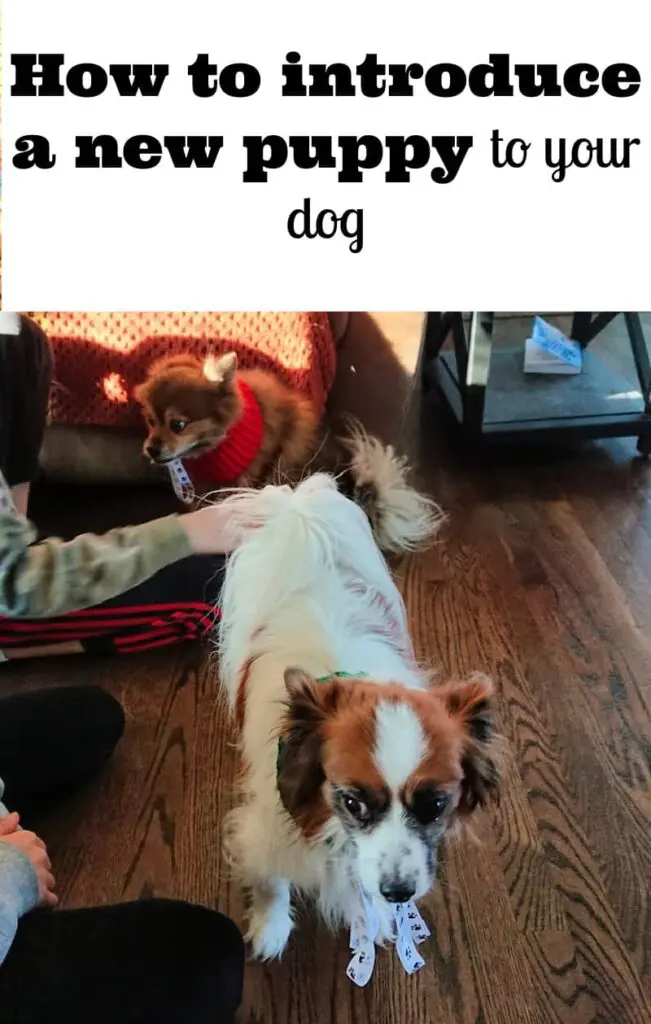
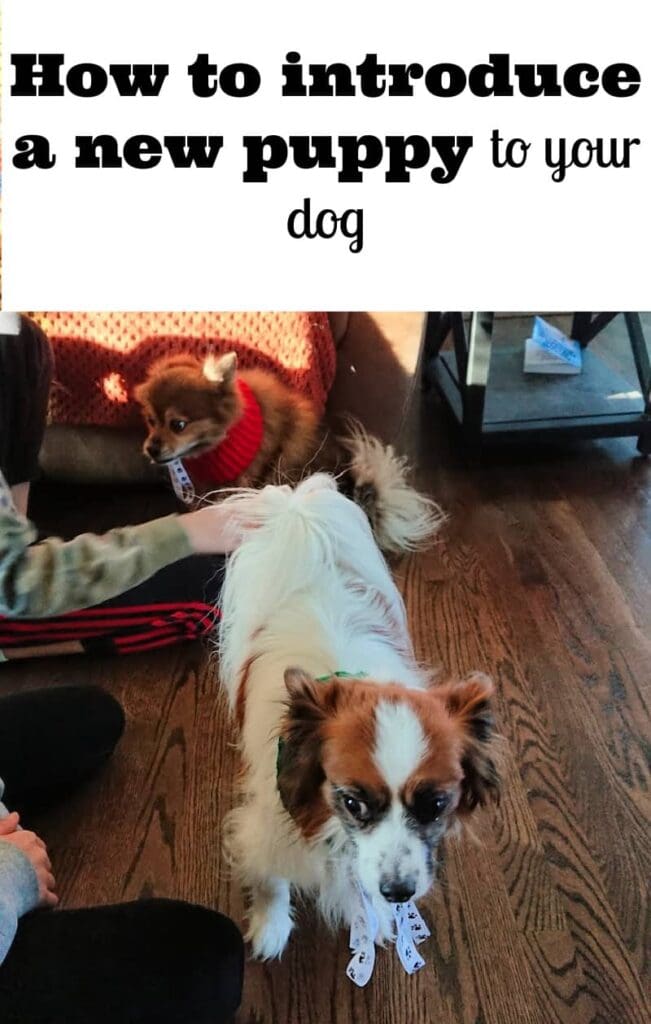
Introducing A New Puppy To Other Dogs
Did you get a new puppy or are you planning on it? Introducing a new puppy to your existing dog for the first time can be an exciting but delicate process. It’s essential to ensure that both dogs feel comfortable and secure during this transition. Proper introduction techniques can help establish a positive relationship between the two, minimizing the chances of stress or conflict. By taking a gradual approach and paying attention to each dog’s body language and behavior, you can set the stage for a harmonious coexistence and a strong bond between your new puppy and your current dog. Here’s how to introduce your a new puppy to your dog.
Step 1: Prepare Your Home Before the Introduction
Before bringing your puppy home, take some time to prepare your space. Ensure that you have all the necessary puppy supplies, such as separate crates for crate training, bedding, and feeding stations for both your resident dog and the new puppy.
Crate training can provide a safe haven for your puppy and give your current dog a break from the excitement of having a new pet in the house. Remove any toys, chews, or food bowls that could cause possessiveness during the introduction. Consider setting up baby gates to manage their access to different areas. It is important that they can be in separate areas and have their own space as they get used to each other.
Whether you’ve opted to adopt or find puppies for sale, a well-prepared home makes the transition easier and more comfortable for both your dogs.
Step 2: Introduce Them in a Neutral Location
The first meeting between your existing dog and your new puppy should happen on neutral ground, like a park or open space away from your home. This approach can prevent territorial behavior and allows both dogs to meet without the pressure of defending their space.
It is a good idea to keep both dogs on leashes and let them approach each other at their own pace. Look for positive body language, such as wagging tails and relaxed postures, and be ready to separate them calmly if things get tense. This careful introduction in neutral territory helps set the tone for a positive relationship as they move into their new home together.
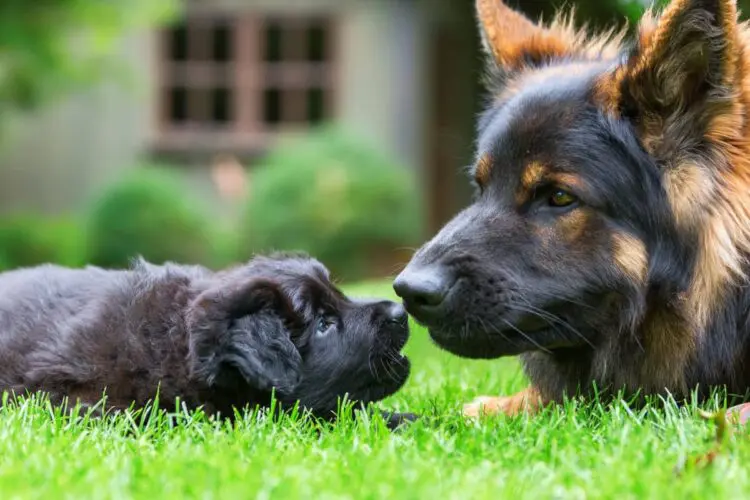

If signs of aggression arise during the introduction of your new puppy to your existing dog, it’s crucial to act quickly to prevent escalation. Common signs of aggression include growling, snarling, raised hackles, stiff body posture, and direct staring. If you notice these behaviors, immediately separate the dogs to give them space and time to calm down. It’s important not to punish either dog for showing aggression, as this can increase stress and worsen the situation. Instead, try to reintroduce them in a more controlled environment, perhaps using barriers like baby gates to allow them to see and smell each other without direct contact. Consider seeking advice from a professional dog trainer or behaviorist if aggression persists, as they can provide guidance tailored to your dogs’ specific needs and help foster a peaceful relationship.
Step 3: Gradually Increase Their Time Together
After the initial meeting, gradually increase the amount of time your dogs spend together. Start with short, supervised interactions and slowly extend these sessions as they become more comfortable around each other. Know that a senior dog may be more cranky with new puppies so it nice for them to be able to retreat to different rooms and get a break.
During this phase, it’s important to focus on puppy care and reinforcing good behavior with treats and praise. You might also consider enrolling your puppy in a puppy class, which can provide essential socialization skills and help your new pet learn to interact positively with other dogs.
Step 4: Maintain Established Routines
Maintaining a consistent routine is crucial for easing the transition to puppy parenthood. Dogs thrive on predictability, so try to keep feeding times, walks, and play sessions as regular as possible. This stability will reassure your resident dog that their life isn’t being upended by the arrival of a new pet.
Incorporate your new puppy into these routines gradually, ensuring that your existing dog still gets plenty of attention and affection. More importantly, balanced attention helps prevent jealousy and ensures that both pets feel secure in their place in the household.

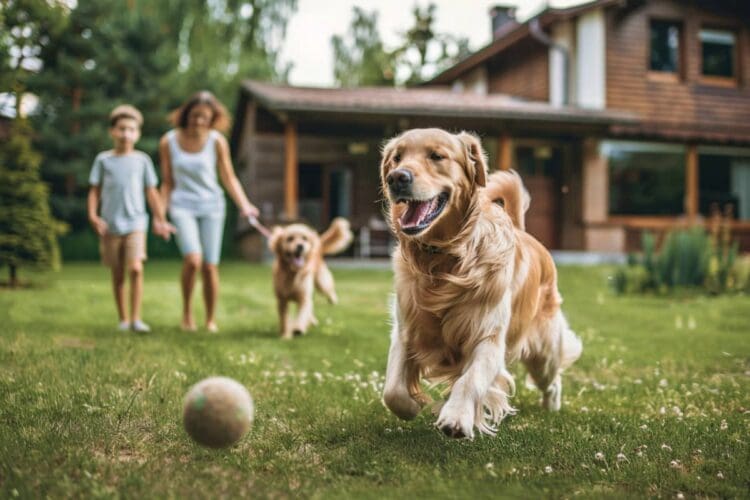
Step 5: Monitor and Manage Playtime
Puppy energy can be overwhelming, especially for an older dog not accustomed to the antics of a young puppy. During playtime, closely monitor their interactions to ensure that play remains friendly and safe.
Keep an eye on both dogs’ body language, and be prepared to intervene if the puppy’s exuberance becomes too much for your older dog. If needed, separate them temporarily to give each dog some downtime.
Structured playtime is also an excellent opportunity to introduce puppy training, teaching your young pet boundaries and appropriate play behavior that will benefit them as they grow.
Step 6: Be Patient with the Adjustment Period
Adjusting to a new home and a new sibling can take time, so it’s essential to be patient. Each dog will have its own pace when it comes to settling in, and it’s not uncommon for your resident dog to need some time to warm up to the new puppy.
During this adjustment period, continue to provide plenty of positive reinforcement and be attentive to both dogs’ needs. Celebrate small steps forward, like shared naps or peaceful coexistence, and remember that patience is key.
Successfully bringing pets together can greatly enrich your home with joy, companionship, and unconditional love. By taking a gentle and understanding approach, you can help both dogs feel comfortable and at ease in their shared environment.

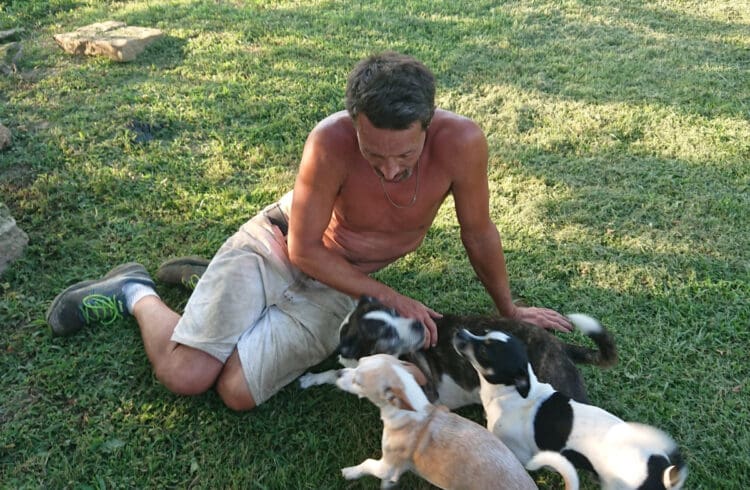
Step 7: Seek Professional Help If Needed
If challenges arise, such as ongoing aggression or significant anxiety, consider seeking the assistance of a professional trainer or behaviorist.
Expert guidance can provide personalized strategies for addressing any issues that come up during the transition. They can also offer tips on managing puppy training and puppy care to support both your new puppy and your existing dog.
Early intervention can prevent potential problems from escalating and help you foster a positive relationship between your pets, making puppy parenthood a more joyful experience.
Conclusion
Bringing a new puppy into a home with an existing dog can be a rewarding experience with the right preparation and approach. Avoid territorial behaviors by following the slow introduction steps above.
By introducing your puppy in a neutral space, gradually increasing their time together, and keeping routines consistent, you can help both pets feel secure and comfortable. Monitor their interactions, provide plenty of positive reinforcement, and be patient with the adjustment process.
With careful planning and a bit of patience, your new puppy and resident dog can build a strong bond, creating a happy and harmonious home for everyone. Are a new puppy parent? I hope you are now feeling confident and ready to introduce your new puppy to your dog. Once they are settled in, share your photos on social media @familyfocusblog! I hope you enjoy this exciting time and your pups become best friends.
Related Posts:
Family New Puppy Tips And Printable Checklist
Pet Care Package Ideas
CBD For Dogs
[ad_2]